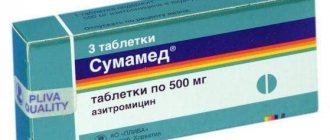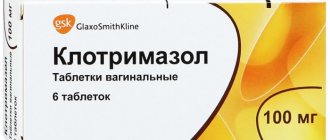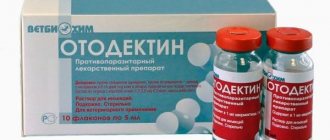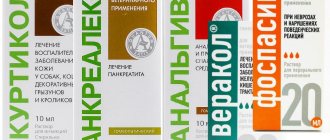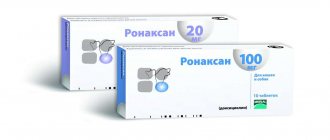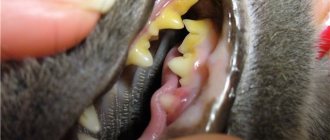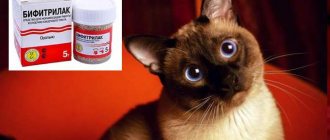Instructions and dosage
Most often, cefazolin is administered intramuscularly to cats, but if the disease is severe, then the pet is prescribed an intravenous drip of the drug.
It is imperative to purchase water for injection at the pharmacy, since antibiotics must be diluted. One capsule should be diluted with 5 milliliters of liquid.
If you suspect that your pet is not tolerating the drug well, you should contact a veterinary clinic. A qualified veterinarian will be able to advise you and also prescribe another remedy.
One bottle must be diluted with 5 ml of solution. The remaining solution can be stored in the refrigerator. The usual dose for an adult cat is 15 mg per 1 kg of pet weight.
Having fully assessed the disease, the doctor may increase the dosage to 30 milligrams. The course is approximately 10 days.
Cefazolin powder
Composition and form
The drug is sold in the form of a powder, which must be diluted and administered intramuscularly. The main component of Cefazolina is the active substance of the same name, cefazolin, which inhibits the synthesis of the bacterial cell wall of the pathogenic microorganism, leading to a bactericidal effect. The maximum concentration of the active ingredient in the blood is achieved 60 minutes after administration of the suspension, remaining in the cat’s body for 12 hours. Cefazolin is excreted unchanged by the kidneys.
About adverse reactions
The main advantage is that it is not at all toxic compared to other similar medications. But this does not exclude the possibility that cats may not have individual intolerance to cefazolin sodium. If your pet has an intolerance to a component, the following undesirable reactions may occur:
- Cramps.
- An allergic reaction (most often it is accompanied by itching of the skin and a rash).
- Decrease in the concentration of leukocytes and platelets.
- Pathologies of the genitourinary system.
- Loss of interest in food.
- Stomach upset, vomiting.
As a rule, side effects are extremely rare and usually disappear within 24 hours. But if you notice a progressive effect of the harmful effects, then you need to immediately take your furry to the veterinary clinic.
A lump always forms at the injection site, so do not worry about this. It will resolve on its own within 48 hours.
Medicine at the withers
Purpose and possible restrictions
Veterinarians prescribe Cefazolin if the cat has been diagnosed with purulent-inflammatory diseases of the ENT organs. The effectiveness of the antibiotic for this disease was studied in detail by the candidate of biological sciences, who is the author of the scientific work, Tairov E.K., like many scientists, the therapeutic activity of Cefazolin was proven against such pathological conditions in cats as:
The use of the drug is advisable for peritonitis in an animal.
- peritonitis;
- pneumonia;
- purulent inflammation of joints and bone tissue;
- nonspecific inflammation of lung tissue;
- inflammatory process on the membrane covering the lungs and the wall of the chest cavity;
- infected wounds;
- postoperative complications.
However, not all pets are allowed to inject Cefazolin. The suspension will harm cats that are hypersensitive to any components of its composition, as well as to medications that also belong to the cephalosporin group. Treatment with the antibiotic in question is contraindicated in animals with severe renal impairment. Cefazolin injections are not recommended for small kittens or pregnant and lactating females due to the ability of the active substance to penetrate milk and cross the placental barrier.
Before using the antibacterial drug Cefazolin for cats, consultation with a veterinarian is required.
Analogs
Like any other drug, cefazolin has analogues:
- The drug rofecin. The manufacturer also took care of his customer, and therefore included a special solution for diluting the powder. Although this is a small thing, it’s actually pleasant, since you don’t have to go to the pharmacy to buy an injection solution.
- Azaran. The price of the product is approximately the same, since it is also actively purchased.
- Amoxiclav. This is an antibiotic, it has an effect on microorganisms.
- Ceftriaxone. Has a powerful effect. But veterinarians consider it more toxic, as it more often causes unwanted reactions in cats.
One of the analogues is Ceftriaxone.
If your pet does not tolerate the drug well, for example, it resists during the injection. Then he can be given an injection with a weak dose of novocaine. In this case, he will know that such an injection will not cause him much pain, and next time he will not resist much. If you decide to use cefazolin to treat your cat, be sure to visit a qualified veterinarian first. He will be able to correctly calculate the dose for the treatment of a specific pathology.
Examine your pet regularly, as through examination you can notice symptoms of developing diseases. We wish you and your pet good health!
How to give a cat an injection of Cefazolin
Cefazolin is injected into the thigh area of cats, most often the hind leg. For the procedure, it is best to use a syringe designed for injecting insulin with a short needle - it reduces the risk of rupture of important blood vessels, and the animal will feel minimal discomfort.
It is better to restrain the cat before giving the injection.
It is better to give a cat an injection together, since antibiotic injections always cause pain.
How to give a cat an intramuscular injection at home? Why learn to give injections yourself? Advantages and disadvantages of intramuscular injections. We select syringes and needles for injections for cats. How to properly restrain your cat before injection. Injection technique. Possible complications in a cat after the injection. You will learn about this by reading the material on our portal.
Before the procedure, the pet needs to be calmed and well secured (for this you can use a retainer bag), then select a place on the thigh with the maximum thickness of the muscle layer and lightly knead it. Draw the required amount of solution into the syringe, insert the needle with a confident movement at an angle of 45 degrees and release the medicine by slowly pressing on the piston.
Cat carrier bag
Video - How to make an intramuscular injection
SIDE EFFECTS WHEN USING CEFAZOLIN IN DOGS
Common side effects of cephalosporins in dogs are vomiting or diarrhea after treatment. These symptoms are usually not serious, but are a sign that your pet is sensitive to the drug. Cefazolin may cause tenderness or pain at the injection site or a sterile abscess. Animals hypersensitive to this type of drug may exhibit anaphylaxis, rash, fever, and blood changes. Kidney damage is a rare side effect and usually only occurs in dogs with kidney problems. High doses or long-term treatment may lead to neurotoxicity, neutropenia, agranulocytosis, thrombocytopenia, hepatitis, interstitial nephritis, positive Coombs test, or tubular necrosis.
Cefazolin
INSTRUCTIONS FOR USE OF CEFEZOL Registration number: 000982/01-2002. Trade name: Cefezol International nonproprietary name: cefazolin Dosage form: white or white powder with a yellowish tint. Pharmacotherapeutic group: antibiotic, cephalosporin. ATC code: (J01DA04) PHARMACOLOGICAL PROPERTIES Pharmacodynamics: 1st generation cephalosporin antibiotic for parenteral use. It acts bactericidal, disrupting the synthesis of the cell wall of microorganisms. It has a wide spectrum of action, is active against gram-positive (Staphylococcus spp., Staphylococcus aureus (non-producing and producing penicillinase; including Streptococcus pneumoniae), Corynebacterium diphtheriae, Bacillus anthracis) and gram-negative (Neisseria meninqitidis, Neisseria gonorrhoeae, Shigella spp. , Salmonella spp., Escherichia coli, Klebsiella spp., Treponema spp., Leptospira spp.) microorganisms. Active against Haemophilus influenzae, some strains of Enterobacter and Enterococcus. Ineffective against Pseudomonas aeruginosa, indole-positive strains of Proteus spp., Mycobacterium tuberculosis, Serratia spp., anaerobic microorganisms, methicillin-resistant strains of Staphylococcus spp. Pharmacokinetics: When administered intramuscularly, a therapeutic concentration is created after 1 hour. In the blood, the antimicrobial concentration remains for 8-12 hours. 90% is excreted in the urine unchanged. Diffuses well into various anatomical cavities and through the placental barrier.
Medicines for animals > Ceftriaxone (injections)
The information posted on this page is for informational purposes only and cannot be used for self-medication!
Short description:
this drug has a wide spectrum of antibacterial action. It has a detrimental effect on staphylococci, streptococci, enterobacteria, Klebsiella, Shigella and many other pathogens. Veterinarians prescribe this third-generation antibiotic to animals suffering from infections of the genitourinary system, respiratory system, soft tissues, and skin. Ceftriaxone is used to treat otitis, meningitis, and sepsis. It is used to prevent the occurrence of postoperative complications.
Leave form:
this antibiotic is a white or yellowish crystalline powder, which is packaged in glass bottles sealed with rubber stoppers. Vials, each containing 2 g, 1 g, 0.5 g or 0.25 g of ceftriaxone sodium salt, are packed in 10 pieces in cardboard boxes.
Dosage:
The powder is intended for intramuscular or intravenous injections. For intramuscular injections, the powder is diluted in novocaine, lidocaine or water for injection, and for intravenous injections - in sterile water for injection (for jet administration), in saline solution or in 5% glucose solution (for drip administration). The dosage of the drug, the method of its use and the frequency of administration are prescribed by the veterinarian individually. For cats, lidocaine is not used to dissolve the powder. The daily dosage of this antibiotic is approximately 20-40 mg per kg of animal weight. The drug is administered, as a rule, for 5-10 days.
Restrictions:
The use of Ceftriaxone is contraindicated if the animal has liver or kidney failure, as well as if there is increased
Source
Hello! Please forgive me for another question about the injection, but again it’s not clear. The dog was prescribed to inject a solution of cefazolin subcutaneously or intramuscularly - the doctor said that “it’s better to inject subcutaneously.” And the instructions for it say that it is done intramuscularly. Now I have some doubts about what would be better. Of course, it’s easier to inject subcutaneously, but you still want to do it correctly and with maximum benefit.
Comments
When the veterinarian prescribed a/b (cefazolin) injection, I asked why not give a/b (analogue) in tablets? He replied that when used in injections, dysbacteriosis is less common.
But I know for sure (I read modern medical literature again) that this is not so and the effect on the flora depends only on the a/b itself, and not on the method of administration.
Thanks a lot! I will study it carefully. Because I am a complete layman in medicine, I am very afraid of doing harm by doing something wrong somehow, by deviating from the doctor’s advice, if this advice does not seem completely strange to me. I always clarify everything and ask again and try to understand what is best, but the doctor we go to usually has little time, because... Almost always there is someone at the reception, and it’s awkward for me to detain you for a long time with questions about how and what is arranged and works. So especially thanks for the link!
Our dog is a girl, and by nature she is extremely patient and calm, that is, she endures all injections and IVs without the slightest twitching. Therefore, it is not even clear whether she was in pain or not when they gave the injection. That is, I hope that if it had hurt, we would have known about it, but even those injections that have a reputation for being terribly painful, she endured extremely calmly, well, maybe she tried just a little to somehow hint that they would quickly leave behind already. Therefore, it is precisely that our dog makes it possible to do with it everything that needs to be done, and it is very scary to do it wrong.
but the doctor we go to usually has little time, because... almost always
Pharmacological properties
Cefazolin is an antibiotic with a broad spectrum of antimicrobial action and belongs to the group of first generation cephalosporins. Like other β-lactam antibiotics, it is bactericidal. The mechanism of action of the drug is to disrupt the synthesis of the bacterial cell wall. Gram-positive bacteria are sensitive to cefazolin - (staphylococci, both producing and not producing penicillinase, streptococci, Corynebacterium diphtheriae, Bacillus antracis) gram-negative bacteria - salmonella, neisseria, Escherichia coli, shigela, Klebsiella spp., Enterobacter spp., Haemophilus influenzae. Spirochetes and Leptospira are also sensitive to cefazolin. Drug-resistant indole-positive strains of Proteus, Pseudomonas aeruginosa, tuberculosis bacillus, anaerobic microorganisms, rickettsia, fungi, viruses and protozoa.
Pharmacological
When administered intravenously, the drug is rapidly absorbed, 90% of the drug binds to blood plasma proteins. The bioavailability of the drug when administered intravenously is 100%. The maximum concentration in the blood upon administration is achieved within 1:00, with intravenous administration - a few minutes after administration, the bactericidal concentration in the blood remains for 8-12 hours. Cefazolin penetrates well into tissues and body fluids; high concentrations of the drug are observed in the joints and synovium, abdominal cavity, kidneys, respiratory tract, and bile. Cefazolin does not penetrate the blood-brain barrier. The drug penetrates the placental barrier and is excreted into breast milk. Cefazolin is practically not metabolized; 90% is excreted unchanged from the body in the urine. The half-life is 2:00; if renal function is impaired, this time can increase to 3-42 hours.
Cefazolin: description and features
Cefazolin is an antibacterial drug of the first generation of cephalosporins, which has a destructive effect on the cell walls of bacteria, destroying them and preventing further reproduction. It has a broad spectrum of action and effectively destroys a range of pathogens, including various strains of cocci, salmonella, shigella, Treponema pallidum and many others. The maximum therapeutic effect is achieved when using Cefazolin to treat diseases caused by gram-positive forms of bacteria. The drug does not affect some types of staphylococci, as well as Proteus, mycobacteria, rickettsia and Pseudomonas aeruginosa.
Cefazolin is available in the form of a white or yellowish powder, packaged in hermetically sealed glass vials of 250, 500 and 1000 mg. It is intended for dilution with sterile water and subsequent intramuscular or intravenous administration.
Cefazolin
After administration by injection, Cefazolin is quickly and well absorbed, and the maximum concentration of the active substance in the body is reached after about an hour. The drug penetrates almost all tissues, including joints, the cardiovascular system, kidneys, urinary tract, skin, etc., due to which its effect is manifested even in the first stages of therapy. The active substance is excreted by the kidneys within 24 hours.
Important! The active substance of Cefazolin is destroyed by gastric juice, so the drug is not used for oral administration.
Indications for use
Cefazolin is used for a variety of diseases caused by the activity of pathogenic organisms sensitive to the effects of the drug. These include the following pathologies:
The drug is used for diseases caused by bacteria sensitive to its effects.
- inflammatory and purulent processes of the ENT organs and respiratory system (pneumonia, pleurisy, abscesses);
- infection and sepsis of soft and bone tissues;
- peritonitis and other diseases of the abdominal cavity;
- meningitis;
- prevention of postoperative complications after surgical interventions;
- diseases of the urinary system and those that are sexually transmitted.
Attention! Like all other antibiotics, Cefazolin is ineffective against viral infections, so its use in such diseases is not only inappropriate, but also dangerous. For diseases of bacterial etiology, it is recommended to use it only when the sensitivity of their pathogens to the effects of the active substance is proven by laboratory tests.
Cefazolin - instructions for use, analogues, reviews, price
The drug Cefazolin
is
an antibiotic
belonging to the first generation of the
cephalosporin
. Cefazolin is administered only by injection, since when taken orally (in tablet form), it is destroyed in the gastrointestinal tract, without having time to be absorbed into the blood and have an antibacterial effect. The antibiotic has a wide spectrum of action, so it can be used to treat various infections that are caused by microbes that are sensitive to it. Cefazolin is used to treat organs of almost all systems, for example, respiratory, urinary, reproductive, skin, joints, etc.
Release forms and name
In Latin, the name of the drug is written as follows - cefazolin, which is the international name of the antibiotic. Commercial names may differ from international ones, since each pharmaceutical company can produce a drug with the active ingredient cefazolin, but give it a memorable and simple name. For example, the antibiotic cefazolin is produced under the following commercial names - Amzolin, Ancef, Atralcef, Vulmizolin, Zolin, Zolfin, Intrazolin, Ifizol, Kefzol, Lizolin, Natsef, etc. However, there are antibiotics whose name coincides with the international name of the substance, for example, Cefazolin-AKOS, Cefazolin-Sandoz, etc. All of the listed drugs are the same - the antibiotic cefazolin, which is used as a standard, regardless of the name and manufacturer. Only the quality of the drug itself, produced by different pharmaceutical companies, may differ.
